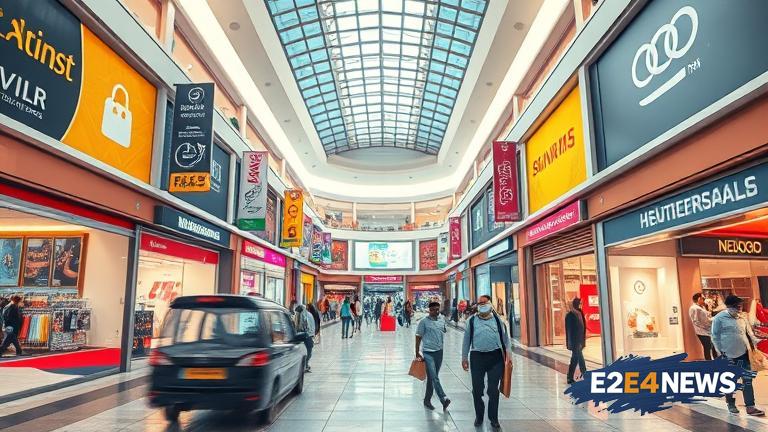The Indian retail sector is undergoing a notable transformation, with a marked shift in focus from high street leasing to malls. According to recent reports, high street leasing in India has declined by 26% in the second quarter of 2025, indicating a significant change in the retail landscape. This decline can be attributed to various factors, including the rising costs of operating on high streets, increased competition, and changing consumer preferences. On the other hand, malls are emerging as the preferred destination for retailers, offering a more organized and efficient retail experience. The growth of e-commerce has also led to a surge in demand for experiential retail, which malls are better equipped to provide. Furthermore, malls offer a range of amenities and services, including food courts, entertainment options, and parking facilities, making them a more attractive option for consumers. The shift towards malls is also driven by the increasing popularity of omnichannel retailing, which requires a physical presence to support online sales. As a result, retailers are opting for malls to create an immersive brand experience and to cater to the evolving needs of consumers. The decline in high street leasing is expected to continue, with many retailers choosing to consolidate their operations in malls. This trend is likely to have a significant impact on the retail landscape, with high streets potentially being repurposed for other uses such as residential or office spaces. The growth of malls is also expected to drive economic growth, with the creation of new jobs and investment opportunities. However, the shift towards malls also raises concerns about the potential impact on small, independent retailers who may struggle to compete with larger chains. To mitigate this, policymakers and industry stakeholders must work together to create a more inclusive and supportive retail environment. The Indian government has already taken steps to promote the retail sector, including the introduction of policies to support the growth of e-commerce and the development of retail infrastructure. Despite these efforts, the retail sector still faces challenges, including high rents, complex regulations, and infrastructure constraints. To address these challenges, retailers and policymakers must work together to create a more favorable business environment. The shift towards malls is a significant opportunity for the retail sector, but it also requires careful planning and management to ensure that the benefits are shared by all stakeholders. In conclusion, the decline in high street leasing and the growth of malls in India is a significant trend that is expected to continue in the coming years. As the retail sector continues to evolve, it is essential to create a supportive and inclusive environment that promotes the growth of all types of retailers, from small independents to large chains. The future of retail in India is likely to be shaped by the interplay between online and offline channels, with malls emerging as a key destination for retailers and consumers alike. The Indian retail sector is poised for significant growth, driven by the increasing demand for experiential retail, the growth of e-commerce, and the development of retail infrastructure. However, to realize this potential, it is essential to address the challenges facing the sector, including high rents, complex regulations, and infrastructure constraints. With careful planning and management, the Indian retail sector can continue to thrive, providing opportunities for retailers, consumers, and the economy as a whole.
